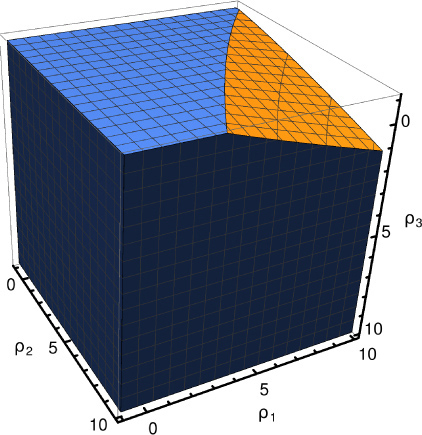EPJ B Highlight - Factors affecting turbulence scaling
- Details
- Published on 06 November 2018

Study focuses on hydrodynamic effects of external disturbances on fluids at critical points, including inconsistent turbulence in all directions, or anisotropy, and varying degrees of compressibility
Fluids exhibiting scaling behaviour can be found in diverse physical phenomena occurring both in the laboratory and in real-world conditions. For instance, they occur at the critical point when a liquid becomes a vapour, at the phase transition of superfluids, and at the phase separation of binary liquids whose components exhibit two different types of behaviour.
Until now, models have not fully taken the effect of external turbulences into account. In a recent study published in EPJ B, Michal Hnatič from Šafárik University in Košice, Slovakia and colleagues investigate the influence of ambient turbulent speed fluctuations in physical systems when they reach a critical point. These fluctuations are found to be the result of a lack of spatial regularity in these systems, or anisotropy, and of the compressibility of fluids. What is unique about this study is that the turbulence introduced in the model is novel and helps to elucidate the extent to which the speed of these fluctuations affects their scaling behaviour.
The authors examine the critical behaviour of physical systems, using two distinct models to do so. The first describes the critical dynamics of the system at equilibrium, while the second represents the stage in which the system is no longer at equilibrium and adopts a scaling behaviour—referred to as directed percolation—previously used to study systems such as the spread of epidemics, forest fires and population growth. To gain a better understanding of the critical behaviour of the system, the authors chose the difficult approach of integrating the mutual effects of large-scale anisotropy and compressibility into their model; previous models had only taken these effects into account separately. They thus identify four types of scaling regimes which can potentially be observed at macroscopic scale for each model. In closing, the authors show that it is anisotropy which may be the key factor determining different types of emerging scaling behaviour.
M. Hnatič, G. Kalagov, T. Lučivjanský (2018), Scaling behavior in interacting systems: joint effect of anisotropy and compressibility, European Physical Journal B 91:269, DOI: 10.1140/epjb/e2018-90308-1





